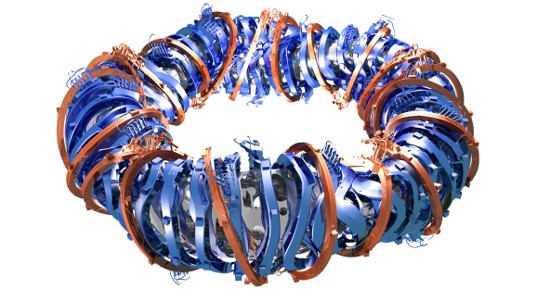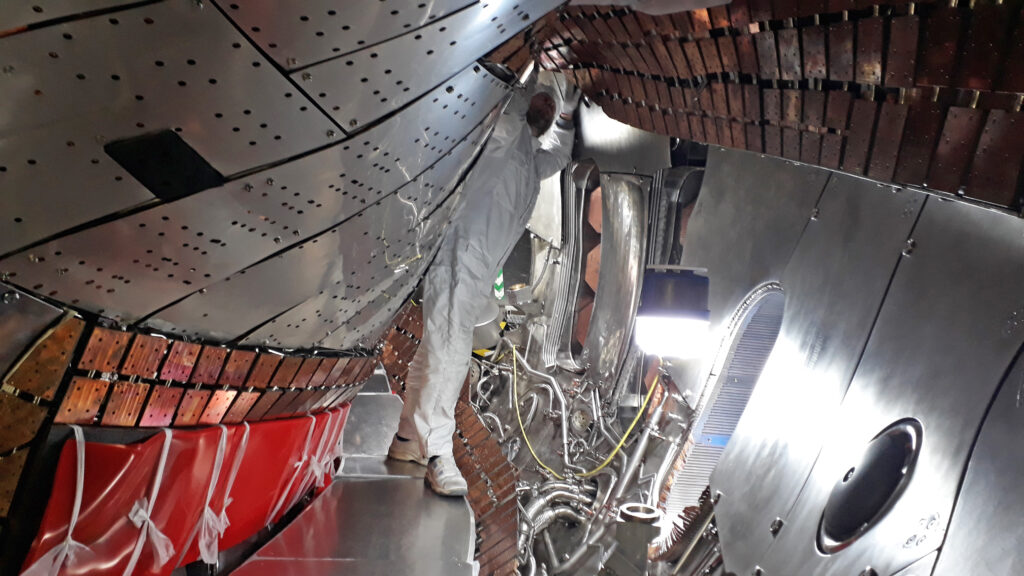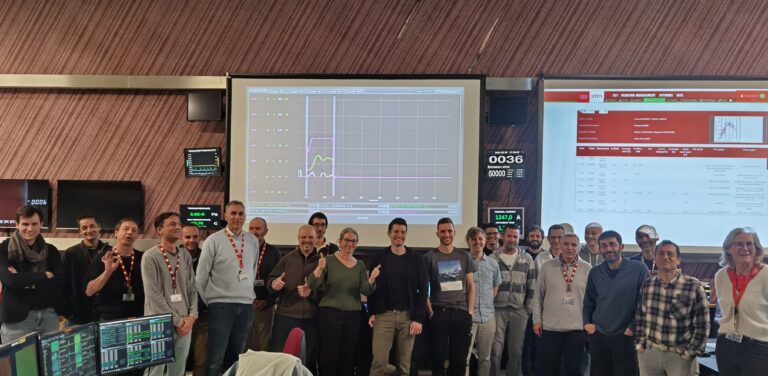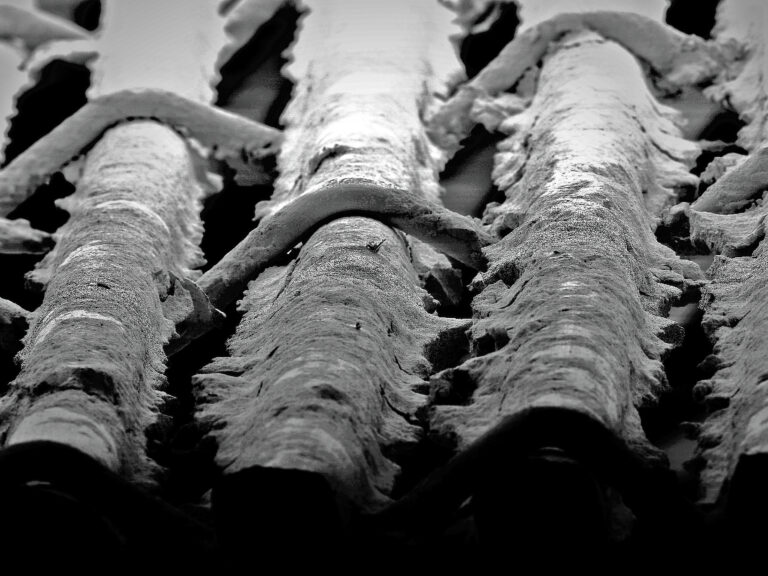Some find the spiraling design of a stellarator the height of beauty, others can’t stand its asymmetric looks. A stellarator’s magnets – necessary to keep the hot, charged fusion fuel (plasma) away from the inner walls – are individually shaped and positioned for an ideal magnetic confinement.
Aesthetics (and the engineering hurdles to constructing a stellarator in the first place) are not high on the list of concerns for the experts at the IPP in Greifswald. Their Wendelstein 7-X stellarator is the world’s most advanced in its class, and may offer a road to fusion energy that outperforms the trusted tokamak design with longer, more stable discharges.
Performance boost
After first experimental campaigns starting in 2015, Wendelstein 7-X (W7-X for friends) is now undergoing a major upgrade campaign. The most recent milestone to celebrate is an important step in the process: completing the new, actively-cooled divertor (exhaust) of the stellarator. The new water-cooled divertor components (designed at KiP and ITZ Garching) will usher the fantastic fusion heat out of the device, allowing it to run for up to 30 minutes per experiment.

Limits of technology
On Friday 18 June 2021, the last of a total of 60 divertor modules was installed in the Wendelstein 7-X plasma vessel. With this, an extremely important technical milestone was reached and after 20 months of assembly time, all actively-cooled divertor target modules have now been successfully integrated. All water connections have been leak-tested locally, some critical flanges at 29 times the atmospheric pressure.
With one narrow exception, all the modules met their tolerance requirements, far below the millimeter scale. This is a major success at the limits of what is technically feasible, and was only possible thanks to an outstanding assembly team – work preparation, technologists, shift supervisors, welders, fitters, vacuum and quality assurance.
A critical collaboration during the upgrade campaign has been the work between the assembly and scientific departments. Together, they evaluated (mostly minor) deviations in the assembly phase and worked out how to manage them.
The current engineering shutdown will continue throughout the year so that a new and improved W7-X can restart its fusion experiments in 2022. According to the current plan, the assembly of the remaining vessel installations, including rework, can be completed by 9 December 2021.
Roadmap to Fusion Energy
Stellarator research is one of the eight missions in the EUROfusion Roadmap to Fusion Energy. This roadmap represents the most comprehensive fusion R&D programme in the word and lays out everything to advance fusion from the lab to the demonstrator stage.
The main focus of EUROfusion is on the most mature fusion device design: the ring-shaped tokamak. Stellarators, although more challenging from an engineering perspective, could offer an alternative pathway to fusion energy through their intrinsically stable and long-lasting plasma discharges.





